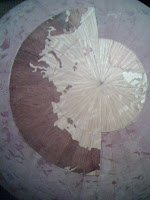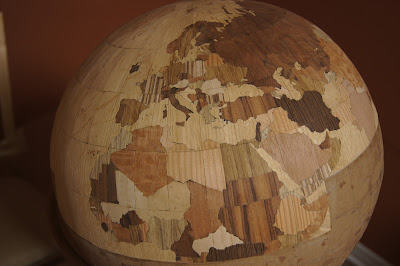I've held onto it because I don't like large phones, the problem is that it is quite underpowered by today's standards: 600 MHz cpu, 256MB of RAM.
Sony Ericsson stopped upgrading this phone at Eclair, but thanks to the dev community, I'm currently running Jelly Bean 4.1.2 on a custom kernel.
Tweaking my phone has become something of a hobby and in an effort to squeeze every drop of performance out of this old hardware I sometimes experiment with overclocking the processor. This kind of customization is built right into the Cyanogen ROM (presuming your kernel supports it), and the settings page comes with a big warning.
It is a very good idea to not select "Set on boot" until you know that the settings you have chosen will not crash your phone. If bad settings crash your phone and are restored on boot, then you can end up in a crash/boot loop.
So, one night I noticed that a recent kernel upgrade had increased the upper limit for the maximum CPU frequency to 864MHz. With total disregard for the consequences, I decided to try this out and forgot to unset the "Set on boot" option.
864MHz is too high and the phone crashes after about 10 seconds. After rebooting, you have again maybe 10 seconds before it crashes again. This is not enough time to get back to the settings page and restore things to working order.
Unfortunately, the last full backup of my phone was about a week older than I liked and I really didn't want to lose the changes I had made since then by doing a restore.
The first step towards fixing this problem was to look at the source code for the settings app which is available on github. A peek at Processor.java reveals the relevant preference keys:
public static final String FREQ_MIN_PREF = "pref_cpu_freq_min"; public static final String FREQ_MAX_PREF = "pref_cpu_freq_max"; public static final String SOB_PREF = "pref_cpu_set_on_boot";We can see in BootReceiver.java that those preferences are read on boot and applied to the cpu.
The settings app will be storing its data under /data/data/com.android.settings:
/data/data/com.android.settings # ls -la drwxr-x--x 1 system system 2048 Mar 2 02:32 . drwxrwx--x 1 system system 2048 Mar 6 05:01 .. drwxrwx--x 1 system system 2048 Mar 2 04:04 cache drwxrwx--x 1 system system 2048 Mar 2 02:37 databases drwxrwx--x 1 system system 2048 Feb 26 05:15 files drwxr-xr-x 1 system system 2048 Feb 26 04:59 lib drwxrwx--x 1 system system 2048 Mar 6 16:34 shared_prefs /data/data/com.android.settings # ls shared_prefs CMStats.xml com.android.settings_preferences.xml
Initially I was expecting to have to break out some sql and modify database files, but the com.android.settings_preferences.xml file immediately caught my eye. grep shows us the cpu preference settings there in plain xml.
/data/data/com.android.settings/shared_prefs # grep pref_cpu com.android.settings_preferences.xml <boolean name="pref_cpu_undervolt" value="true"/> <string name="pref_cpu_freq_max">864000</string> <boolean name="pref_cpu_set_on_boot" value="true"> <string name="pref_cpu_freq_min">122880</string> <string name="pref_cpu_gov">smartassV2</string>While we are still in the adb shell we can also check to see what the valid frequency values are:
~ # cat /sys/devices/system/cpu/cpu0/cpufreq/scaling_available_frequencies 122880 245760 320000 480000 604800 614400 633600 652800 672000 691200 710400 729600 748800 768000 787200 806400 825600 844800 864000All that remains is to adb pull the file to the PC, modify the pref_cpu_freq_max setting to something more reasonable (729600), and then adb push it back to the phone.


















